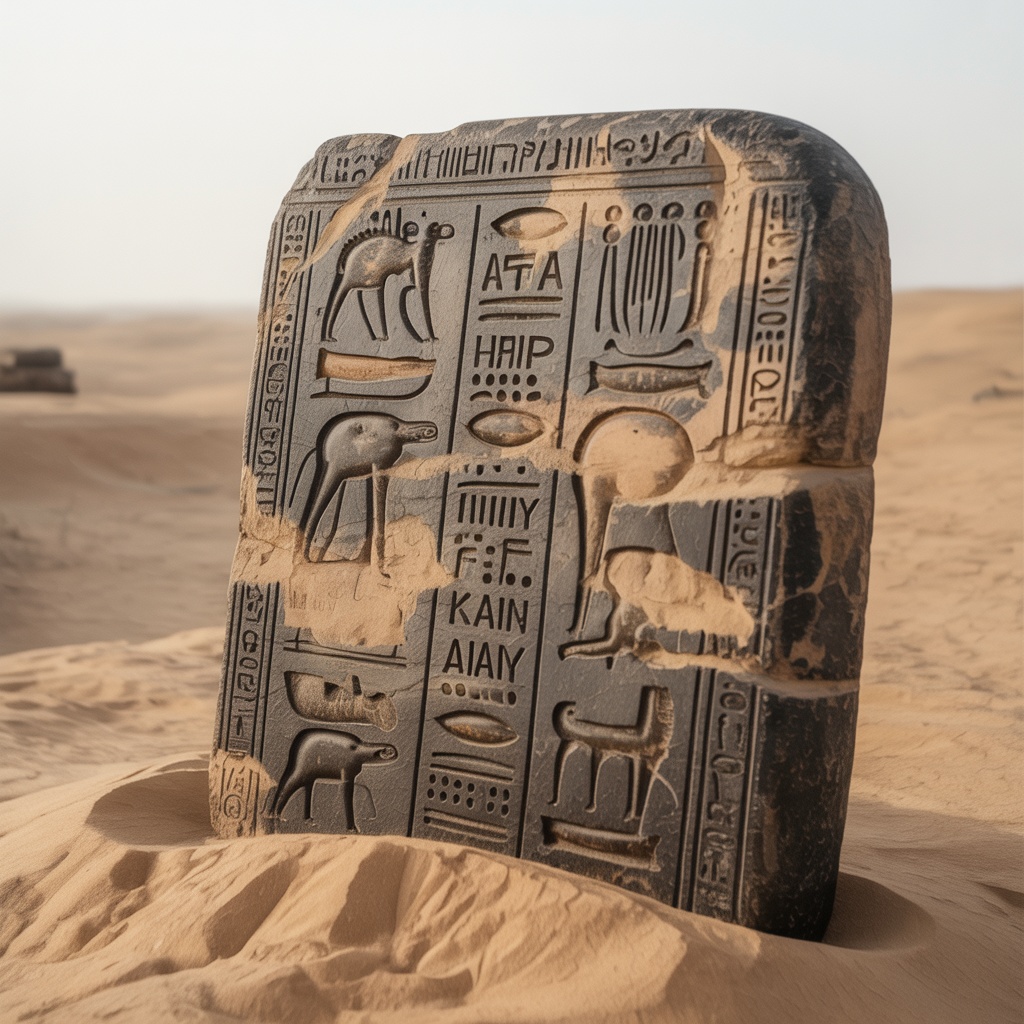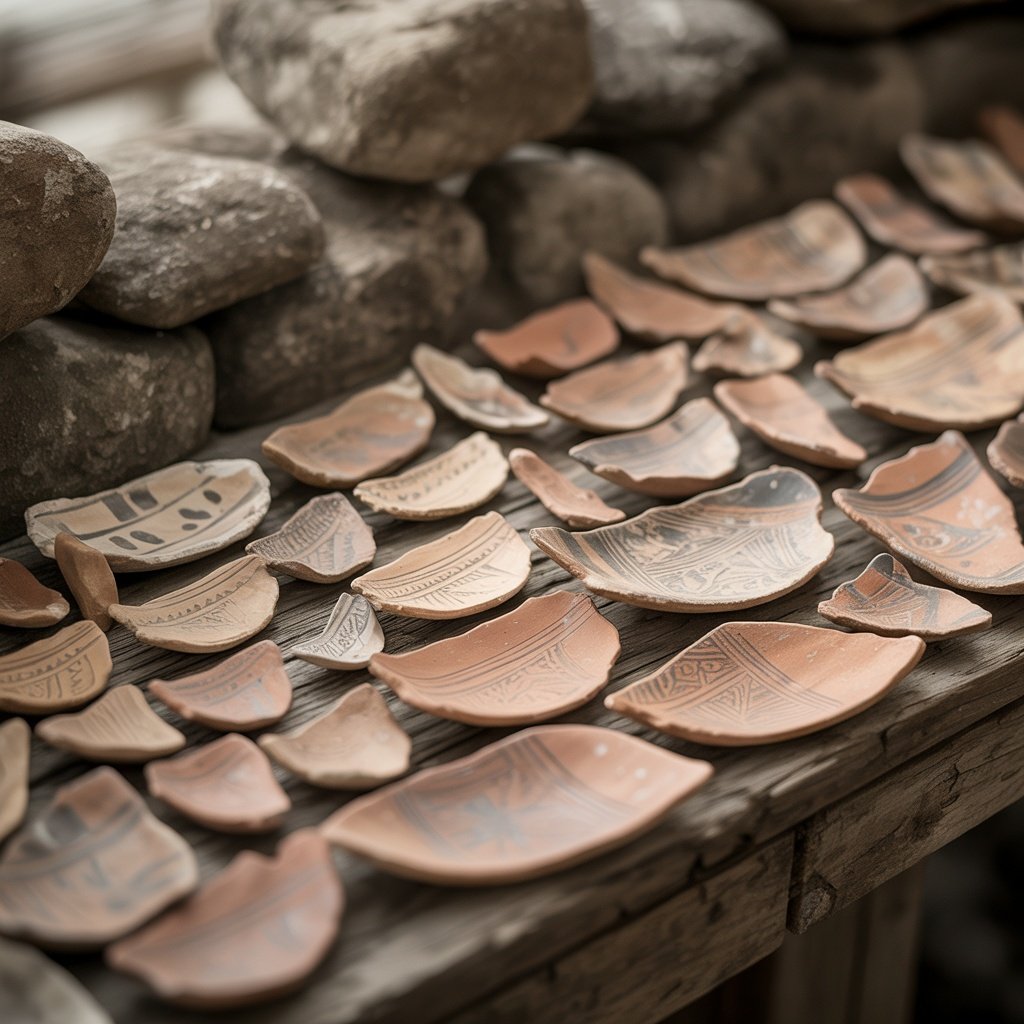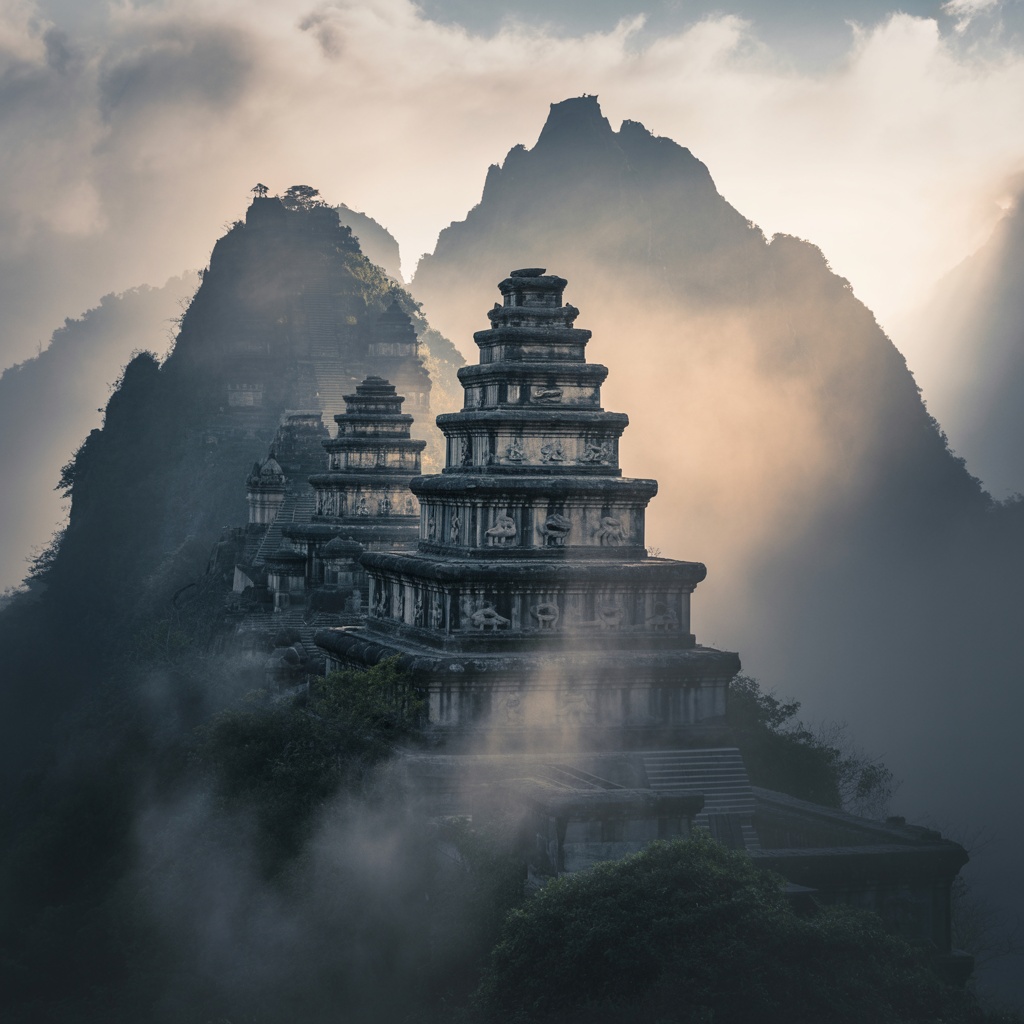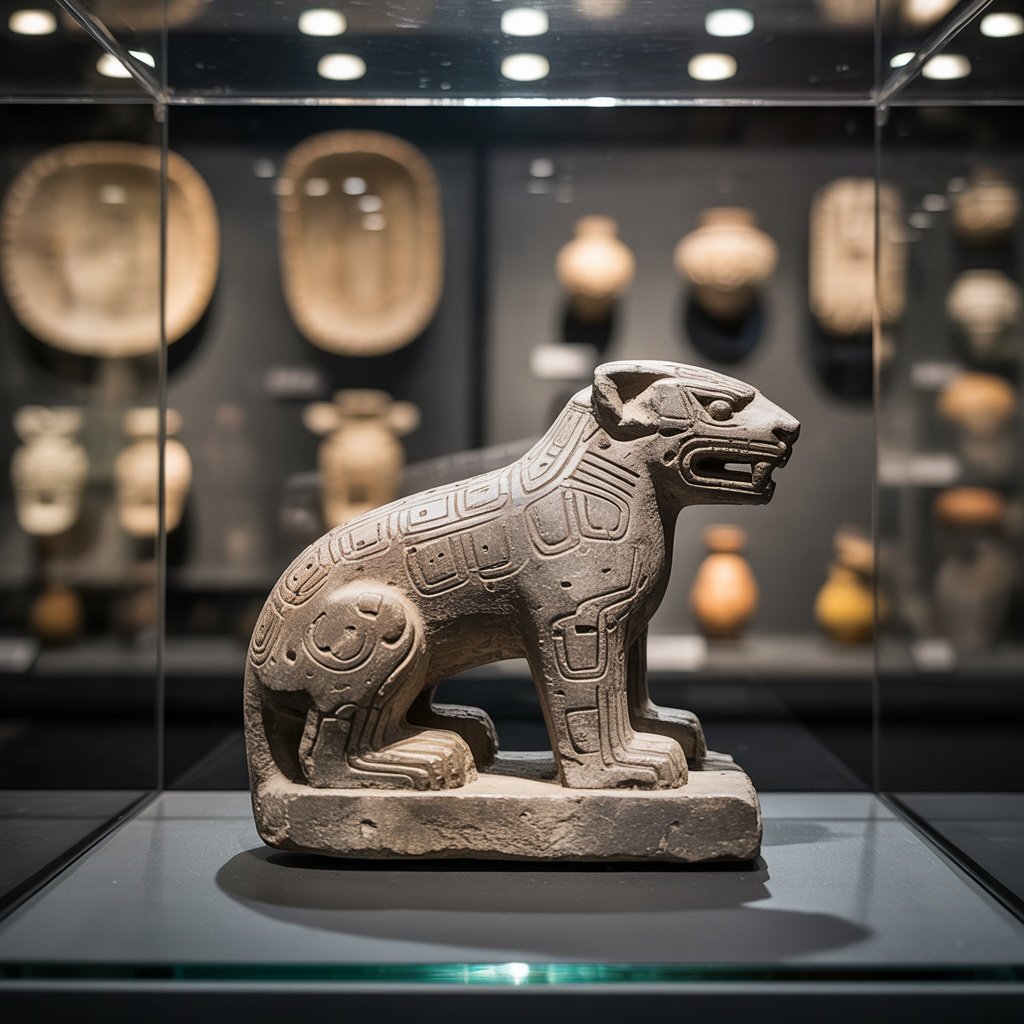The museums of Merida, Yucatan—particularly the Gran Museo del Mundo Maya (Great Museum of the Maya World) and the Palacio Canton Regional Anthropology Museum—house some of Mexico's most significant Mayan archaeological collections outside of Mexico City, providing essential context for understanding the extraordinary civilisation that flourished across the Yucatan Peninsula for over two millennia. These institutions preserve artefacts from major sites including Chichen Itza, Uxmal, Dzibilchaltun, and Mayapan, offering visitors comprehensive insights into Mayan culture, history, archaeology, and continuing cultural presence amongst contemporary Maya communities.
As archaeological tourism specialists who organise comprehensive Mayan heritage expeditions, we recognise Merida's museums as essential complements to site-based exploration. This comprehensive guide examines the major museums, collection highlights, exhibition themes, research facilities, and practical visiting information for travellers seeking in-depth engagement with Mayan archaeological heritage and Yucatan regional history.
Gran Museo del Mundo Maya: Contemporary Showcase of Ancient Culture
The Gran Museo del Mundo Maya, opened in 2012, represents Mexico's most ambitious effort to present Mayan culture comprehensively, combining archaeological artefacts, ethnographic materials, multimedia presentations, and contemporary Mayan cultural expressions in a state-of-the-art facility designed to international museum standards.
Architectural Design and Symbolism
The museum building itself constitutes an architectural landmark designed to reference Mayan cosmology and sacred architecture. The structure features a massive cantilevered upper level suspended above a ground-level plaza, creating dramatic shadows that shift throughout the day—a design element referencing the interplay of light and shadow in Mayan astronomical observations and architectural alignments.
The building's materials combine modern construction techniques with textures and colours evoking traditional Mayan architecture: limestone cladding referencing the stone used in ancient construction, geometric patterning suggesting Mayan decorative motifs, and interior spaces organised according to cosmological principles important in Mayan worldview.
Permanent Exhibition: Mayan Culture Through Time
The museum's permanent exhibition "Mayab: The Eternal Heart of the Maya" presents Mayan culture chronologically and thematically across multiple galleries, beginning with origins and culminating in contemporary Mayan communities.
Pre-Classic Period (2000 BCE - 250 CE)
Early galleries present archaeological evidence for Mayan culture's emergence from earlier Mesoamerican traditions. Ceramic vessels, stone tools, early architectural remains, and settlement pattern data demonstrate the development of agriculture, permanent villages, and increasingly complex social organisation that laid foundations for Classic Period achievements.
Particularly significant are materials documenting the Olmec influence on early Mayan culture—jade artefacts, ceramic styles, and monumental stone sculpture showing cultural exchange between the Olmec heartland in the Gulf Coast region and emerging Mayan societies across the Yucatan and Guatemala highlands.
Classic Period (250-900 CE): The Florescence
The museum's strongest collections document the Classic Period when Mayan civilisation reached its cultural, artistic, and architectural zenith. Exceptional stone sculptures, ceramic masterworks, jade ornaments, and architectural fragments from major sites illustrate the aesthetic sophistication and technical excellence achieved by Classic Period artisans and craftspeople.
Stone Sculpture: Carved stelae (standing stone monuments) and architectural sculpture demonstrate Mayan artistic achievements. These monuments typically depict rulers in elaborate costumes, accompanied by hieroglyphic texts recording historical events, dynastic genealogies, and astronomical observations. The museum's collection includes exceptional examples showing the evolution of sculptural styles across different cities and time periods.
Ceramic Collections: Mayan pottery ranks amongst Mesoamerica's finest ceramic achievements. The museum displays polychrome vessels decorated with mythological scenes, hieroglyphic texts, and geometric patterns. Particularly significant are cylinder vessels and plates used in elite contexts, demonstrating sophisticated painting techniques and providing valuable iconographic evidence for understanding Mayan religion and mythology.
Jade and Precious Materials: Jade held paramount value in Mayan culture, associated with water, fertility, and divine power. The museum's jade collection includes carved pendants, beads, ear ornaments, and burial masks demonstrating both artistic excellence and the material's symbolic significance. Additional precious materials including shell, obsidian, and pyrite show the extensive trade networks connecting the Yucatan to distant Mesoamerican regions.
Post-Classic Period (900-1500s CE)
Post-Classic galleries address the controversial "Maya collapse"—the abandonment of major Classic Period cities—and the cultural transformations characterising the later period. Materials from sites including Chichen Itza, Mayapan, and the east coast trading centres demonstrate significant cultural continuity despite political and demographic changes.
The museum presents evidence for increased Mexican (particularly Toltec) influences during this period, visible in architectural styles, iconography, and material culture. However, it emphasises that these influences were incorporated into continuing Mayan cultural traditions rather than representing wholesale replacement of Mayan culture by foreign conquerors—a more nuanced interpretation than earlier simplistic narratives of "Toltec invasion."
Colonial and Contemporary Maya
Crucially, the museum extends beyond pre-Hispanic archaeology to address colonial-period impacts and contemporary Mayan communities. This inclusive approach recognises that Maya culture didn't end with Spanish conquest but transformed and adapted whilst maintaining cultural continuity.
Colonial-period materials document both Spanish colonisation's devastating impacts (population collapse from disease, forced labour systems, religious persecution) and Mayan resistance and cultural survival. Contemporary ethnographic displays present current Mayan communities, traditional practices, languages, and cultural expressions, emphasising that approximately 7 million Maya people continue living in Mexico, Guatemala, Belize, Honduras, and El Salvador, maintaining cultural identities connected to ancient heritage.
Palacio Canton: Regional Anthropology Museum

The Palacio Canton, housed in an elegant Beaux-Arts mansion from the early 20th century, functions as the Yucatan Regional Museum of Anthropology operated by Mexico's National Institute of Anthropology and History (INAH). Whilst smaller than the Gran Museo, its focused collection and historical building provide complementary museum experiences.
Building History
The Palacio Canton itself represents an important historical monument, constructed between 1909 and 1911 during the prosperous henequen (sisal) boom when Yucatan produced most of the world's rope fibre. The mansion's opulent architecture reflects the wealth generated by henequen production, though this prosperity rested on exploitative labour systems affecting Mayan and Yaqui workers.
The building's transformation into an anthropology museum in 1977 represents a democratic repurposing of elite architecture for public cultural education—a common pattern in Mexican museum development where colonial and post-independence mansions house collections documenting indigenous heritage.
Archaeological Collections
The Palacio Canton's archaeological displays emphasise Yucatan-specific materials, particularly from northern peninsula sites. Collection strengths include:
Dzibilchaltun Materials: Extensive collections from this important northern Yucatan site occupied from Pre-Classic through Colonial periods. Materials document long-term settlement continuity and cultural evolution across major temporal transitions.
Puuc Region Artefacts: Materials from Uxmal, Kabah, Sayil, and other Puuc sites demonstrate the distinctive Puuc architectural style and the cultural florescence of this hilly region during the Terminal Classic period (800-1000 CE). Architectural elements including carved stone façade decorations and column drums illustrate the sophisticated geometric and mosaic-style decoration characteristic of Puuc architecture.
Physical Anthropology Displays: The museum includes displays on Mayan physical anthropology, presenting skeletal materials that document health, diet, deliberate cranial modification (head shaping), dental decoration, and burial practices. These materials provide invaluable bioarchaeological evidence complementing material culture and architectural remains.
Collection Highlights: Exceptional Archaeological Artefacts

Across Merida's museums, certain artefacts stand out as exceptional examples of Mayan artistic achievement, archaeological significance, or historical importance.
The Chac Mool from Chichen Itza
One of several Chac Mool sculptures recovered from Chichen Itza, this reclining figure with a receptacle on its abdomen demonstrates the Mexican influences at Terminal Classic Chichen Itza. Chac Mool sculptures (named by 19th-century archaeologist Augustus Le Plongeon) appear at Central Mexican sites but are rare in the Maya lowlands except at Chichen Itza, illustrating cultural connections during this period.
Hieroglyphic Stairway Fragments
Fragments of hieroglyphic stairways—monumental staircases with carved texts on each riser—provide crucial historical documentation. These architectural texts recorded dynastic histories, military victories, astronomical observations, and ritual events. The decipherment of Mayan hieroglyphs (primarily accomplished in the late 20th century) transformed these carved texts from mysterious symbols into readable historical documents.
Painted Vessels from Elite Burials
Polychrome ceramic vessels recovered from elite burials rank amongst Mayan art's finest achievements. These vessels were painted after firing with organic pigments that have remarkably survived nearly two millennia. Scenes depict mythology, court life, ritual performances, and historical events, accompanied by hieroglyphic texts identifying depicted individuals and explaining narrative contexts.
One exceptional example depicts a scene from the Popol Vuh (the Quiche Maya creation epic known from a post-conquest text) showing Hero Twins' underworld adventures—demonstrating that mythological narratives recorded in colonial-period texts have deep pre-Hispanic roots.
Stelae Recording Historical Events
Carved stone stelae typically depict rulers commemorating significant events: accession to power, military victories, ritual performances, or completion of calendrical cycles. The accompanying hieroglyphic texts provide precise dates (often to the specific day in the Mayan Long Count calendar), historical information, genealogical data, and titles documenting complex political structures.
These monuments function as primary historical sources, and their systematic study has revolutionised understanding of Mayan political history, revealing a landscape of competing city-states engaged in complex diplomatic and military relationships rather than the peaceful theocracy once imagined by earlier scholars.
Research Facilities and Academic Programmes
Beyond public exhibitions, Merida's museums maintain research facilities supporting ongoing archaeological and anthropological investigation of Mayan culture.
Collections Research Access
Both museums maintain extensive reserve collections (artefacts not currently displayed) accessible to qualified researchers. These collections include vast quantities of ceramics, lithics (stone tools), architectural fragments, and other materials recovered from decades of archaeological excavations across Yucatan.
Researchers must obtain permissions through appropriate institutional channels, demonstrating legitimate research purposes and following protocols protecting cultural heritage. This system balances scholarly access necessary for advancing knowledge with protection of irreplaceable cultural materials.
Conservation Laboratories
Professional conservation laboratories at both institutions employ specialists in various materials conservation: ceramics, stone, metals, organic materials (textiles, wood, leather), and wall paintings. Conservation work ranges from stabilisation of newly excavated materials to restoration of museum display pieces to long-term preventive conservation ensuring collection preservation.
Occasionally, museums offer behind-the-scenes programmes showing conservation work, demonstrating the scientific and technical expertise required to preserve archaeological materials for future generations.
Educational and Community Programmes
The museums provide extensive educational programming for schools, community groups, and general public: guided tours, lectures, workshops, temporary exhibitions, and cultural events. These programmes emphasise connecting archaeological heritage to contemporary Mayan communities, promoting pride in indigenous heritage, and educating broader Mexican society about Mayan cultural contributions.
Connecting Museum Visits to Archaeological Sites

Merida's museums function most powerfully when integrated with visits to actual archaeological sites across the Yucatan Peninsula. Understanding artefacts' original contexts enhances appreciation, whilst museum knowledge enriches site visits through comparative perspectives.
Chichen Itza
Chichen Itza, Mexico's most visited archaeological site (approximately 2.6 million visitors annually), lies 120 kilometres east of Merida. Museum collections include numerous artefacts from Chichen Itza excavations, providing context unavailable at the site itself where most portable artefacts have been removed for protection and conservation.
Seeing Chichen Itza sculptures and ceramics at Merida museums before visiting the site helps visitors understand the architectural sculpture remaining in situ, recognise iconographic patterns, and appreciate the site's scale and significance within Mayan civilisation. Our archaeological expedition services arrange comprehensive Chichen Itza visits combined with museum tours and additional Yucatan sites.
Uxmal and the Puuc Route
Uxmal and associated Puuc region sites (Kabah, Sayil, Xlapak, Labna) demonstrate the distinctive Puuc architectural style characterised by elaborate geometric stone mosaic façades. Museum displays of architectural elements, ceramics, and sculpture from these sites provide essential context for appreciating their archaeological and artistic significance.
The Puuc sites are less crowded than Chichen Itza, offering more intimate archaeological experiences. Their locations across the hilly Puuc region provide beautiful landscapes and opportunities to experience multiple sites showing variations within a shared architectural tradition.
Mayapan
Mayapan, located 40 kilometres southeast of Merida, functioned as the last major Mayan political capital (approximately 1200-1450 CE) before Spanish conquest. The site's extensive residential areas, defensive walls, and ceremonial architecture document Post-Classic Yucatan political organisation. Museum materials from Mayapan excavations illuminate this important but often-overlooked period. Visitors interested in Mayapan should also explore detailed information about this significant late Mayan site.
Dzibilchaltun
Dzibilchaltun, just 15 kilometres north of Merida, offers convenient access to a significant archaeological site with an on-site museum. The site's exceptionally long occupation (Pre-Classic through Colonial periods) documents cultural continuity across major transitions. The spring equinox phenomenon at the Temple of the Seven Dolls (where sunlight passes directly through aligned doorways) demonstrates Mayan astronomical knowledge and architectural alignment precision.
Visiting Merida's Museums: Practical Information
Gran Museo del Mundo Maya
Location: Calle 60 Norte, northern Merida (approximately 7 kilometres from city centre). Accessible via city buses or taxi.
Hours: Wednesday-Monday, 8:00 AM - 5:00 PM (closed Tuesdays). Extended hours until 8:00 PM on Fridays.
Admission: Approximately 150 pesos (USD 8) for adults, with discounts for students, seniors, and children. Sundays free for Mexican nationals and residents.
Facilities: Cafeteria, museum shop, auditorium, temporary exhibition spaces, accessible facilities for visitors with mobility limitations.
Palacio Canton Regional Anthropology Museum
Location: Paseo de Montejo 485, central Merida on the city's main boulevard. Walking distance from many hotels.
Hours: Tuesday-Sunday, 8:00 AM - 5:00 PM (closed Mondays).
Admission: Approximately 75 pesos (USD 4), with discounts for students and seniors. Sundays free for Mexican nationals and residents.
Facilities: Museum shop, limited café services, accessible ground floor (upper floors may present accessibility challenges in this historic building).
Recommended Visit Strategy
For visitors with limited time, prioritise the Gran Museo del Mundo Maya for its comprehensive coverage and exceptional collections. Allocate 2-3 hours for thorough exploration. Those with additional time should visit the Palacio Canton for its focused Yucatan collections and beautiful historic building (allow 1-2 hours).
Ideally, visit museums before exploring archaeological sites, establishing foundational knowledge that enriches site experiences. However, post-site museum visits also work well for contextualisation and answering questions arising during site exploration.
Photography Policies
Photography without flash is generally permitted for personal, non-commercial use in both museums, though temporary exhibitions may have restrictions. Tripods and professional equipment usually require special permissions. Video recording policies vary—check with museum staff. Always respect posted signs and staff instructions.
Guided Tours and Educational Programmes
Both museums offer guided tours in Spanish and sometimes English (check schedules). Private specialist tours can be arranged through our archaeological tourism services, providing in-depth interpretation tailored to your interests and connecting museum materials to broader Mayan archaeological and cultural contexts.
Merida as Archaeological Tourism Hub
Beyond its museums, Merida functions as the primary base for archaeological tourism across the Yucatan Peninsula, offering excellent infrastructure, accommodation, restaurants, and services supporting multi-day expeditions to various sites.
Colonial City Heritage
Merida itself possesses significant colonial-period architectural heritage: the massive cathedral built partly from stones removed from Mayan temples, colonial mansions along Paseo de Montejo, and traditional neighbourhoods maintaining 19th-century urban fabric. This colonial heritage documents Spanish conquest's impacts on Mayan culture and the complex colonial society that emerged.
Contemporary Mayan Culture
Merida's markets, particularly the Lucas de Galvez market, maintain traditional commerce where Mayan vendors sell produce, crafts, and traditional foods. Contemporary Mayan culture remains vibrant across the Yucatan, with many communities maintaining Mayan language, traditional agriculture, religious practices (often combining Catholic and ancient Mayan elements), and crafts. Engaging respectfully with contemporary Maya communities helps visitors understand cultural continuity connecting ancient heritage to living traditions.
Regional Cuisine
Yucatecan cuisine represents a distinctive regional Mexican tradition incorporating Mayan ingredients and techniques: cochinita pibil (pit-cooked pork), papadzules (egg-filled tortillas in pumpkin seed sauce), salbutes and panuchos (traditional antojitos), and various preparations using habanero chillies. Food represents living cultural heritage connecting contemporary practice to ancient traditions—archaeological evidence documents many ingredients and cooking techniques with pre-Hispanic origins.
For those interested in comparative Mesoamerican archaeology, the museums and sites around Merida reward comparison with other Mexican archaeological centres. Whilst Merida focuses on Mayan heritage, understanding how Mayan civilisation related to other Mesoamerican cultures including the Olmec, Teotihuacan, Zapotec, and Aztec traditions reveals complex patterns of interaction, influence, and distinctive cultural development across ancient Mexico.
